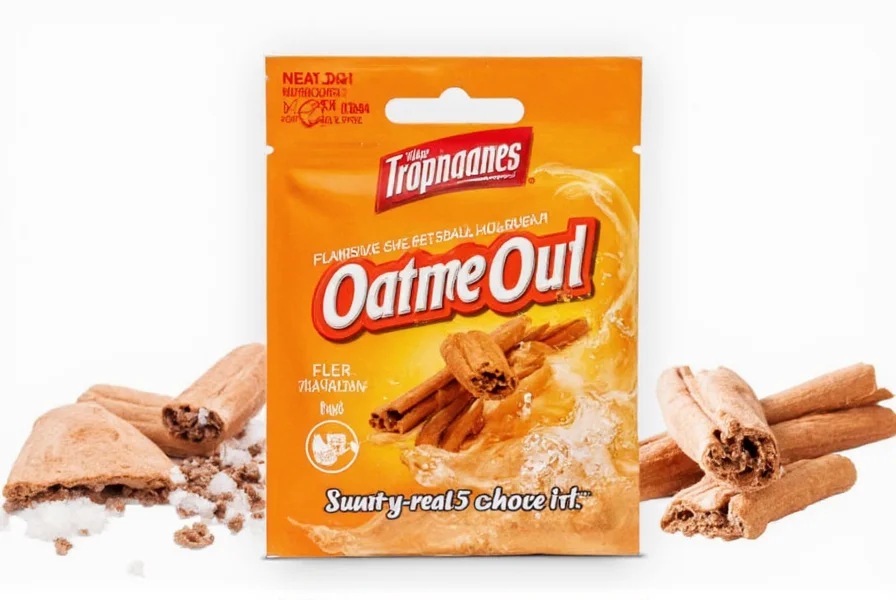Cinnamon-flavored chewing gum has carved out a unique niche in the global gum market by offering an alternative to the dominant mint varieties. This distinctive product category traces its origins to early 20th century confectionery innovations when gum manufacturers began experimenting with spice-based flavors beyond traditional wintergreen and peppermint.
The Historical Development of Cinnamon Gum
The introduction of cinnamon-flavored chewing gum represents an important diversification in the gum industry's flavor portfolio. Early gum formulations in the 1920s-1930s primarily featured mint and fruit flavors, but manufacturers soon recognized consumer interest in more complex taste experiences. Cinnamon, with its warm, spicy character, emerged as a natural candidate for gum flavoring due to its established use in other confectionery products.
By the 1950s, several major gum producers had incorporated cinnamon varieties into their product lines, though these early formulations often struggled with flavor intensity and longevity. The development of improved flavor encapsulation techniques in the 1980s allowed for more consistent cinnamon flavor delivery, making cinnamon gum a commercially viable alternative to mint varieties.

Flavor Composition and Manufacturing Process
Cinnamon-flavored chewing gum achieves its distinctive taste through careful formulation of flavor compounds. The primary flavoring agents include cinnamaldehyde (responsible for the characteristic spicy note), eugenol (providing warmth), and various terpenes that contribute to the overall complexity.
| Key Flavor Compound | Concentration in Cinnamon Gum | Sensory Contribution |
|---|---|---|
| Cinnamaldehyde | 0.5-1.2% | Spicy, warm sensation |
| Eugenol | 0.1-0.3% | Woody, clove-like warmth |
| Linalool | 0.05-0.15% | Floral undertones |
| Coumarin | Trace amounts | Sweet, vanilla-like notes |
Manufacturers face unique challenges with cinnamon gum production compared to mint varieties. The spicy compounds in cinnamon can interact differently with gum base polymers, requiring specialized emulsification techniques to ensure consistent flavor release. Additionally, cinnamon flavor tends to degrade more quickly than mint flavors, necessitating protective encapsulation methods to extend flavor duration.
Sensory Characteristics and Consumer Experience
The sensory profile of cinnamon-flavored chewing gum differs significantly from traditional mint varieties. When first chewed, cinnamon gum delivers an immediate spicy-sweet sensation that gradually evolves as the gum warms in the mouth. This warming effect, absent in mint gums, creates a distinctive physiological response that many consumers find appealing.
Research on flavor longevity shows that cinnamon gum typically maintains strong flavor intensity for 15-25 minutes before noticeable diminishment, compared to 20-30 minutes for many mint varieties. The flavor decay pattern also differs, with cinnamon gum often exhibiting a more gradual decline rather than the sharper drop-off seen in some mint gums.
Comparative Analysis: Cinnamon vs. Mint and Fruit Flavors
Understanding the differences between cinnamon-flavored chewing gum and other varieties helps explain its dedicated consumer following. While mint gums primarily stimulate cold receptors (TRPM8), cinnamon activates warmth receptors (TRPV1), creating a fundamentally different oral sensation.
From a flavor chemistry perspective, mint gums rely heavily on menthol and related compounds that produce cooling effects, while cinnamon gum's signature warmth comes from cinnamaldehyde's interaction with oral receptors. This physiological difference contributes to cinnamon gum's popularity among consumers seeking alternatives to the cooling sensation of mint.
When compared to fruit-flavored gums, cinnamon offers a more complex flavor profile with multiple sensory dimensions (sweetness, spice, warmth) rather than the simpler sweet-tart profile of most fruit varieties. This complexity appeals to consumers looking for more sophisticated flavor experiences in their chewing gum.
Potential Benefits and Applications
Beyond its distinctive taste, cinnamon-flavored chewing gum may offer several potential benefits. The warming sensation can create a perception of enhanced breath freshness that differs from the cooling effect of mint gums. Some studies suggest that cinnamon compounds may have mild antimicrobial properties that could contribute to oral health, though more research is needed in gum-specific applications.
Cinnamon gum's stimulating properties make it a popular choice for consumers seeking a mild sensory boost during work or study sessions. Unlike mint gums that can sometimes feel overwhelming, cinnamon provides a more gradual sensory experience that many find less intrusive while still delivering effective flavor.

Market Presence and Consumer Preferences
Cinnamon-flavored chewing gum maintains a steady 8-12% market share in the global gum industry, consistently ranking as the third most popular flavor category after mint and fruit varieties. Market research indicates that cinnamon gum appeals particularly to adult consumers aged 25-45, with slightly higher preference among male consumers.
Regional variations exist in cinnamon gum popularity, with stronger adoption in North America and parts of Europe compared to Asian markets where mint varieties dominate. Some manufacturers have responded to consumer demand by creating hybrid varieties like cinnamon-mint blends that offer both warming and cooling sensations.
Emerging Trends in Cinnamon Gum Development
Recent innovations in cinnamon-flavored chewing gum focus on enhancing flavor longevity and creating more authentic cinnamon experiences. Some manufacturers now use encapsulated natural cinnamon oil rather than synthetic flavor compounds to deliver a more complex, layered flavor profile that better mimics real cinnamon.
Sugar-free cinnamon gum varieties have gained popularity as consumers seek reduced-sugar options without sacrificing flavor quality. Additionally, some specialty producers are experimenting with single-origin cinnamon varieties (like Ceylon cinnamon) to create premium gum products with distinctive flavor characteristics.
Frequently Asked Questions
Why does cinnamon gum create a warming sensation while mint gum feels cooling?
Cinnamon gum activates TRPV1 receptors in the mouth that respond to heat and capsaicin, creating a warming sensation. Mint gum activates TRPM8 receptors that respond to cold temperatures, producing a cooling effect. These different physiological responses explain why cinnamon feels warm while mint feels cool, despite both being used in gum products.
Does cinnamon-flavored chewing gum actually contain real cinnamon?
Most commercial cinnamon-flavored chewing gums use synthetic cinnamaldehyde rather than actual cinnamon extract due to cost and consistency considerations. However, premium and specialty brands increasingly incorporate natural cinnamon oil or extract to provide a more authentic flavor experience. The ingredient list will specify whether natural or artificial flavors are used.
How long does the flavor typically last in cinnamon-flavored chewing gum?
Cinnamon-flavored chewing gum typically maintains strong flavor intensity for 15-25 minutes before noticeable diminishment. This is slightly shorter than many mint varieties, which often last 20-30 minutes. The flavor decay pattern differs as well, with cinnamon gum showing a more gradual decline rather than the sharper drop-off seen in some mint gums.
Is cinnamon gum better for freshening breath than mint gum?
Both cinnamon and mint gums effectively freshen breath, but they work through different mechanisms. Mint creates an immediate cooling sensation that many associate with freshness, while cinnamon provides a warming sensation that some consumers find equally refreshing. The effectiveness depends more on the gum's sugar content and additional ingredients than the primary flavor, as both can mask bad breath effectively when sugar-free.
Are there any health benefits specific to cinnamon-flavored chewing gum?
While chewing gum in general promotes saliva production which benefits oral health, cinnamon-flavored varieties may offer additional potential benefits. Cinnamon compounds have demonstrated mild antimicrobial properties in laboratory studies, though the concentration in gum is likely too low for significant effects. Some research suggests cinnamon may have mild cognitive stimulating properties, but more studies are needed to confirm these effects in gum form.











 浙公网安备
33010002000092号
浙公网安备
33010002000092号 浙B2-20120091-4
浙B2-20120091-4